Meteora
The Holy Monasteries of Meteora
One of the most important monuments in the world, protected by UNESCO, which has declared it a “Monument of Humanity to be preserved and protected”, it is the most remarkable -after Mount Athos- monastic centre in Greece. The first ascetics came here in the 11th century. However, Meteora flourished as a monastic centre in the 13th-14th centuries, as many inhabitants of the surrounding areas embraced the monastic life.
The oldest way of accessing the monasteries of Meteora was by climbing. Back then it had the meaning of a struggle for isolation and the search for the divine. Nowadays it is an alternative activity and the best way to enjoy the uniqueness of the landscape. Besides, most pilgrims – visitors use the steps carved into the rocks. The walks along the paths are fascinating, hidden by the sheer volume of the huge rocks, which are thought to have been created by sediment, stones and other materials carried by the waters of a large river that had its mouth in this area. Continuous erosion by wind and rain and other geological changes over the years have given the rocks their present form.
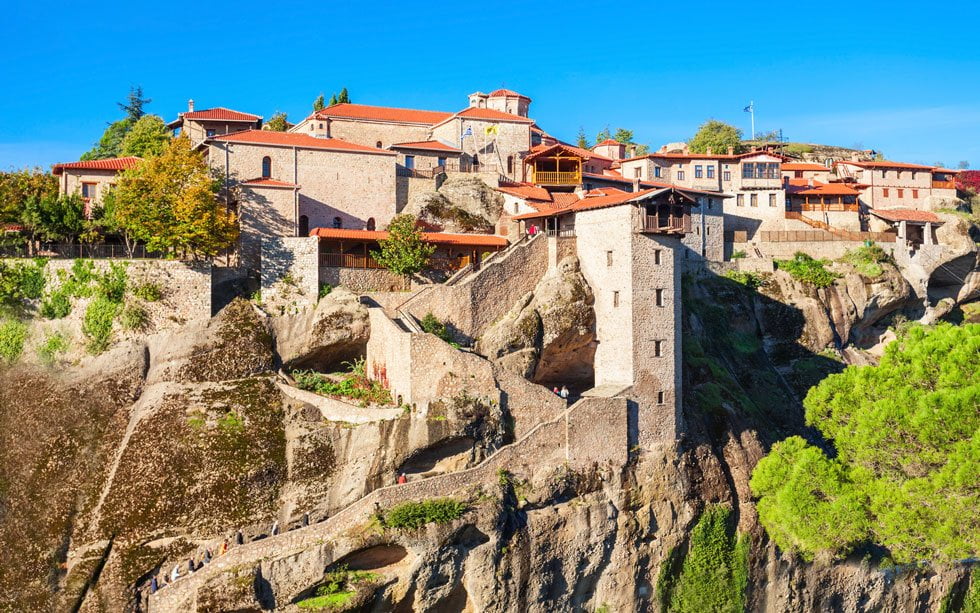
Holy Monastery of Megalo Meteoro
It is located on the highest and largest rock. It was founded around 1340 by St. Athanasios the Meteorite (1302-1380). It is worth seeing the tower (1520), the current Museum of Folklore with old utensils and tools, the ossuary, the church of the Transfiguration of the Saviour (1388 the sanctuary of the church, 1545 the nave and the narthex), the refectory (1557, now the Monastery’s Museum of Relics) and the hearth (1557 kitchen (now the Museum of Folklore with old bronze, clay and wooden cooking utensils).

Holy Monastery of Saint Stephen
The official patrons of the monastery are the saints Antonios (first half of the 15th century) and Philotheos (mid-16th century). The small church of Agios Stefanos is a single-aisled basilica, built in 1350. The present church of Agios Charalambos (1798) is of the Athonite type and is decorated with magnificent woodcarvings. The imposing refectory has been transformed into a model modern museum with exhibits of the most remarkable relics of the monastery: manuscripts, post-Byzantine icons, gold-plated vestments and textiles, woodcarvings, elaborate silversmith’s works, etc.

Holy Monastery of Varlaam
According to tradition, it was first inhabited by the ascetic hermit Barlaam in the 14th century. The monastery’s largest Athonite-style katholikon, dedicated to All Saints, was built in 1542. The nave was frescoed in 1548 by the Theban painter Frangos Katelanos. In the late 16th and early 17th centuries, the most organised bibliographical laboratory of the Meteoric monasteries and a special goldsmith’s workshop were in operation.
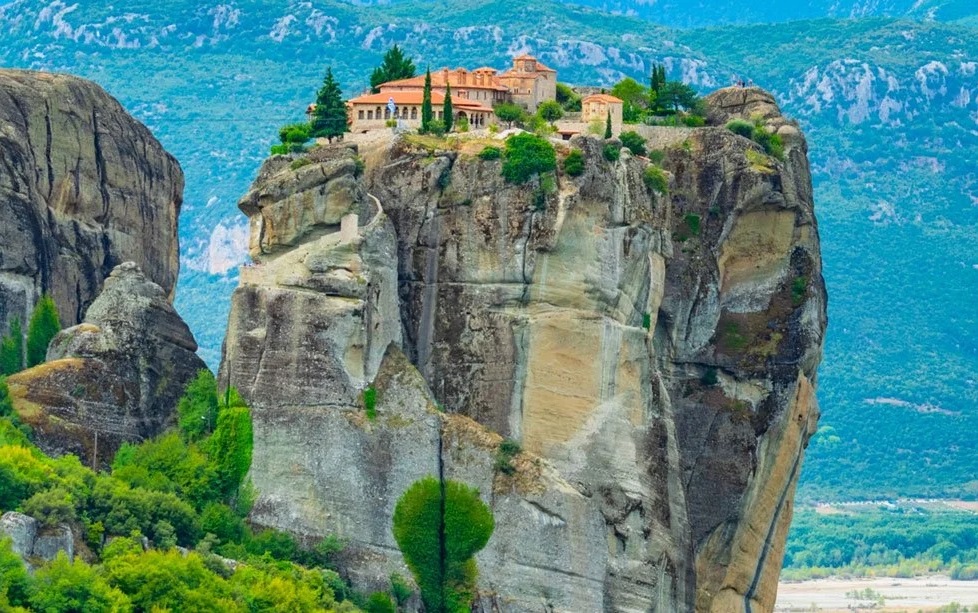
Holy Monastery of the Holy Trinity
On a typical rock of Meteora, majestic, imposing and steep. A document of the ruler Simeon Ureesi-Paleologos shows that Agia Triada was an organized monastery from 1362. The present main church was erected around 1476 and is a small cross-shaped biconical church with a central dome on its roof. Of particular interest is the Folklore Museum of the monastery, which has a rich collection of antique weavings, utensils, tools and objects of folk art.
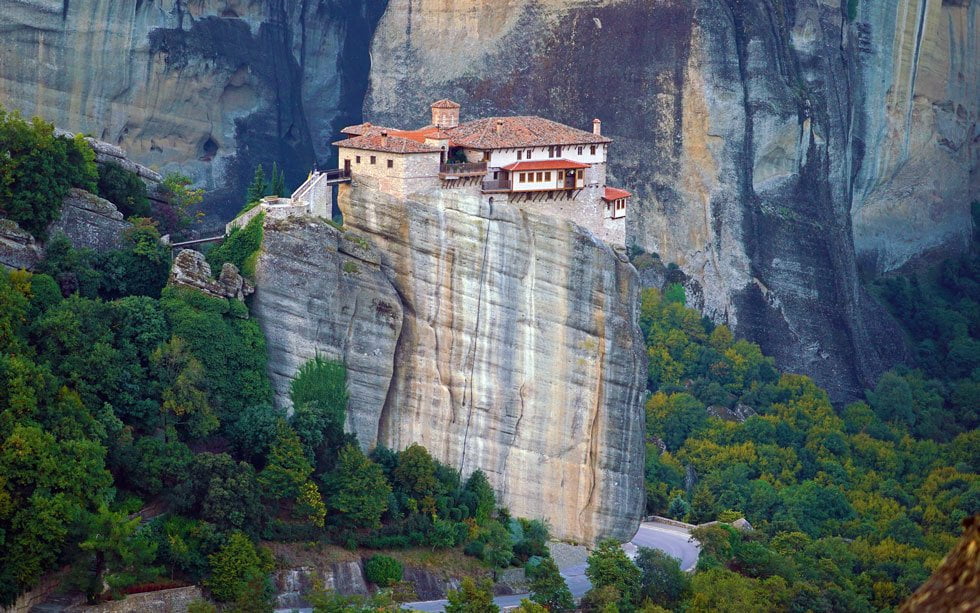
Holy Monastery of Rusanos
It was founded in 1529, on the ruins of earlier buildings. The church of the Transfiguration of the Saviour was built around 1530 and is of the Athonite type. The frescoes covering the nave and the narthex belong to the Cretan School (according to experts, to Tzortzis, a pupil of Theophanes of Crete). Although the church of the monastery is dedicated to the Transfiguration of the Saviour, the memory of Saint Barbara (4 December) is commemorated with great pomp and reverence in the small chapel of the same name.

Holy Monastery of Saint Nicholas Anapausa
Near the village of Kastraki and between the ruined monasteries of Prodromos, Agia Moni and Pantokratoros, the Monastery of Agios Nikolaos Anapaussa is located on a narrow rock, elegant and stately, with many floors. The organized monastic life in the monastery dates back to the first decades of the 14th century. The frescoes of the church of Agios Nikolaos are the oldest autograph work of Theophanes of Crete and have all the special characteristics of the unique art of the great hagiographer of the Cretan School.
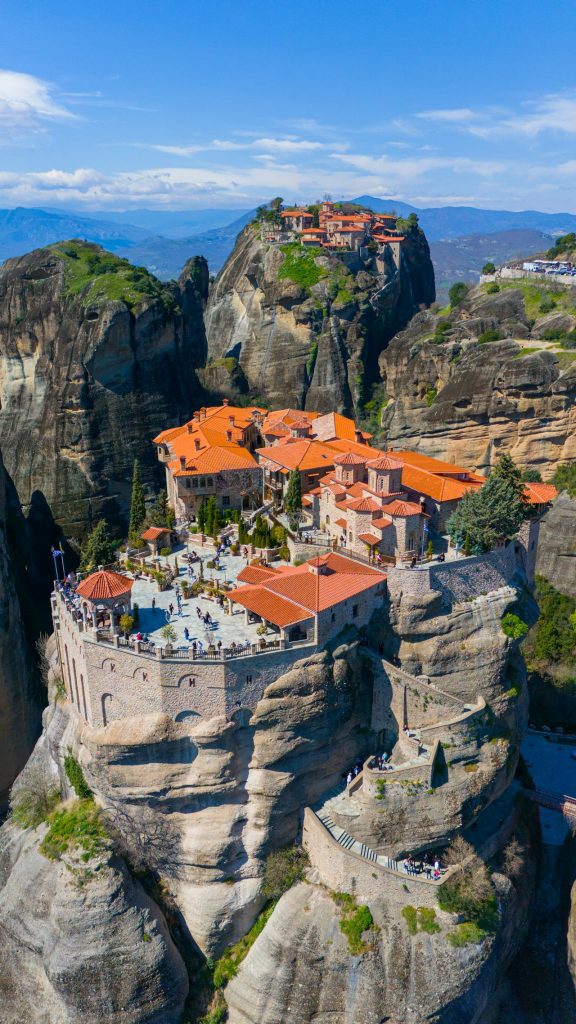
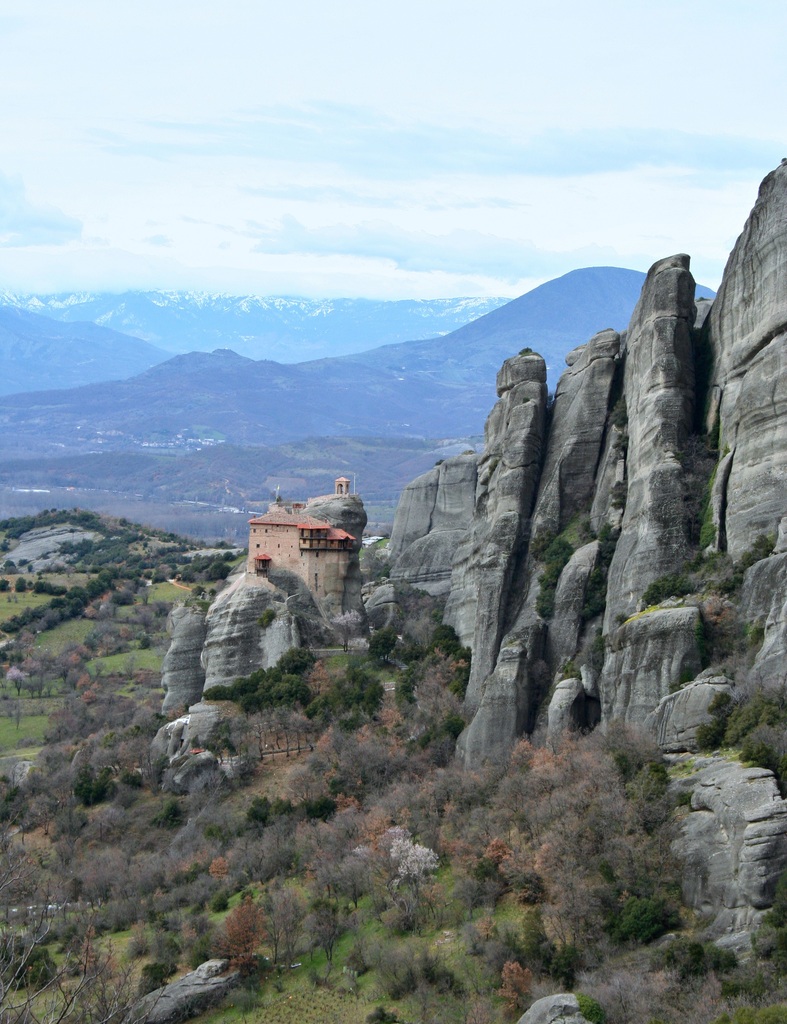
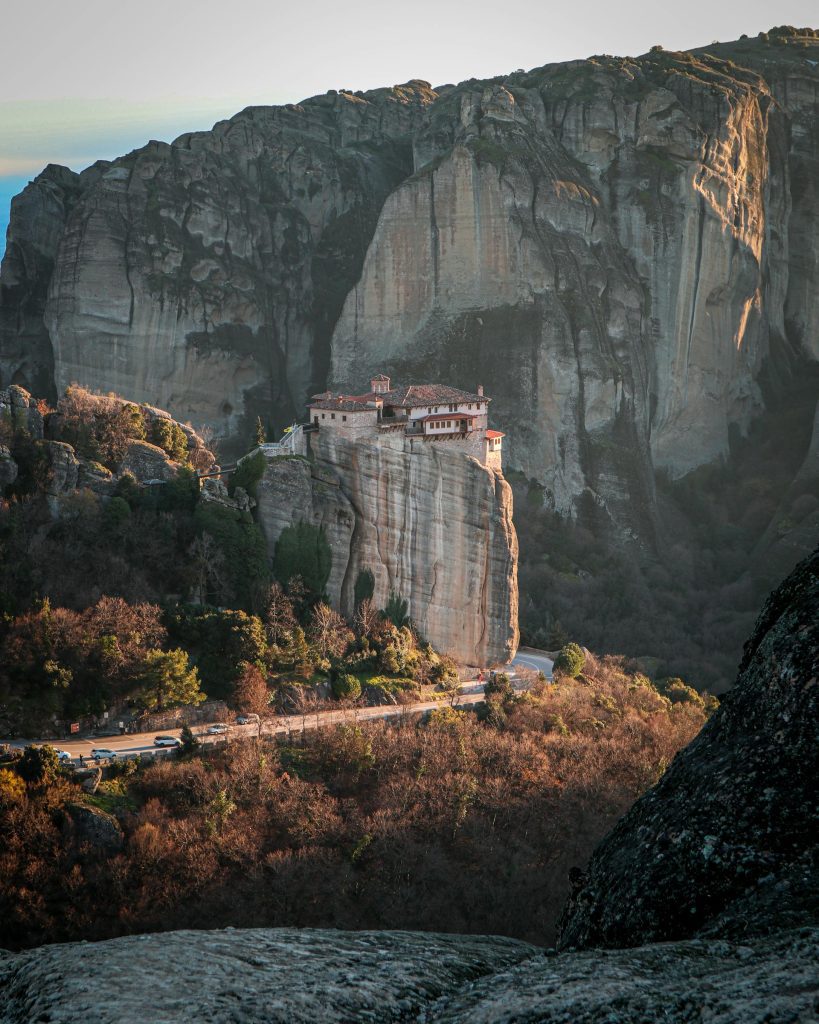
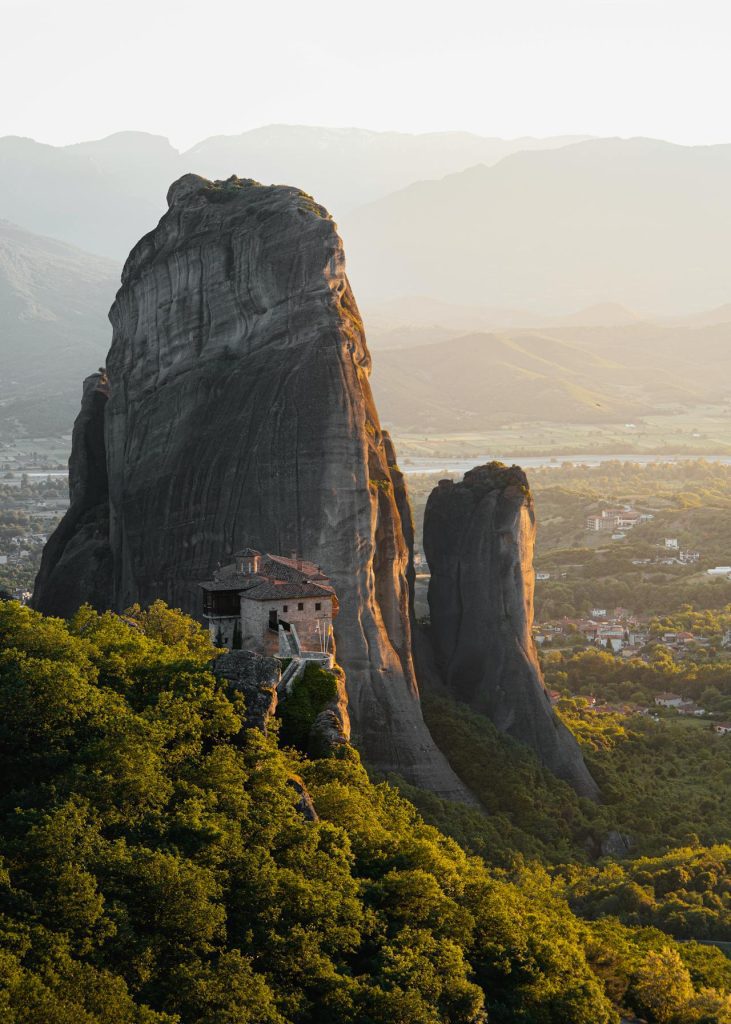
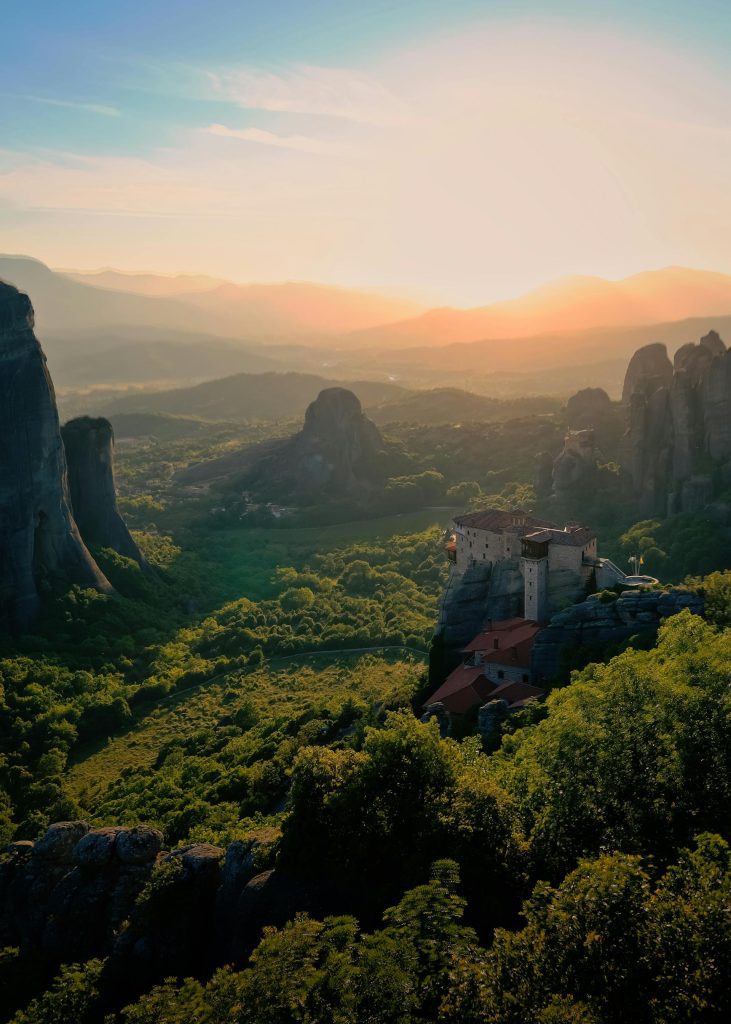
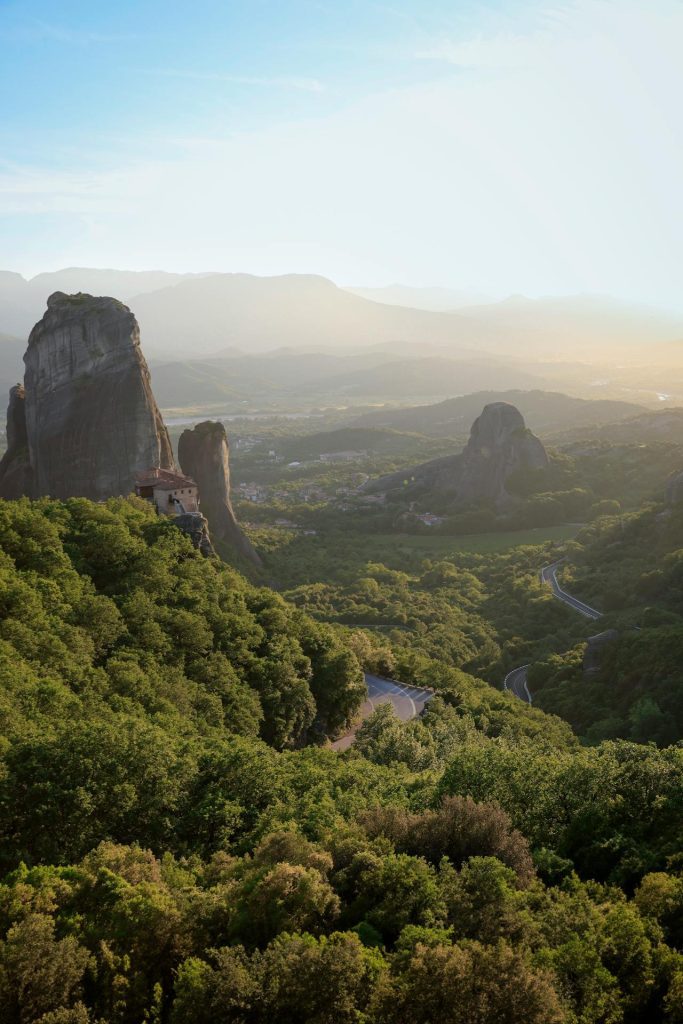
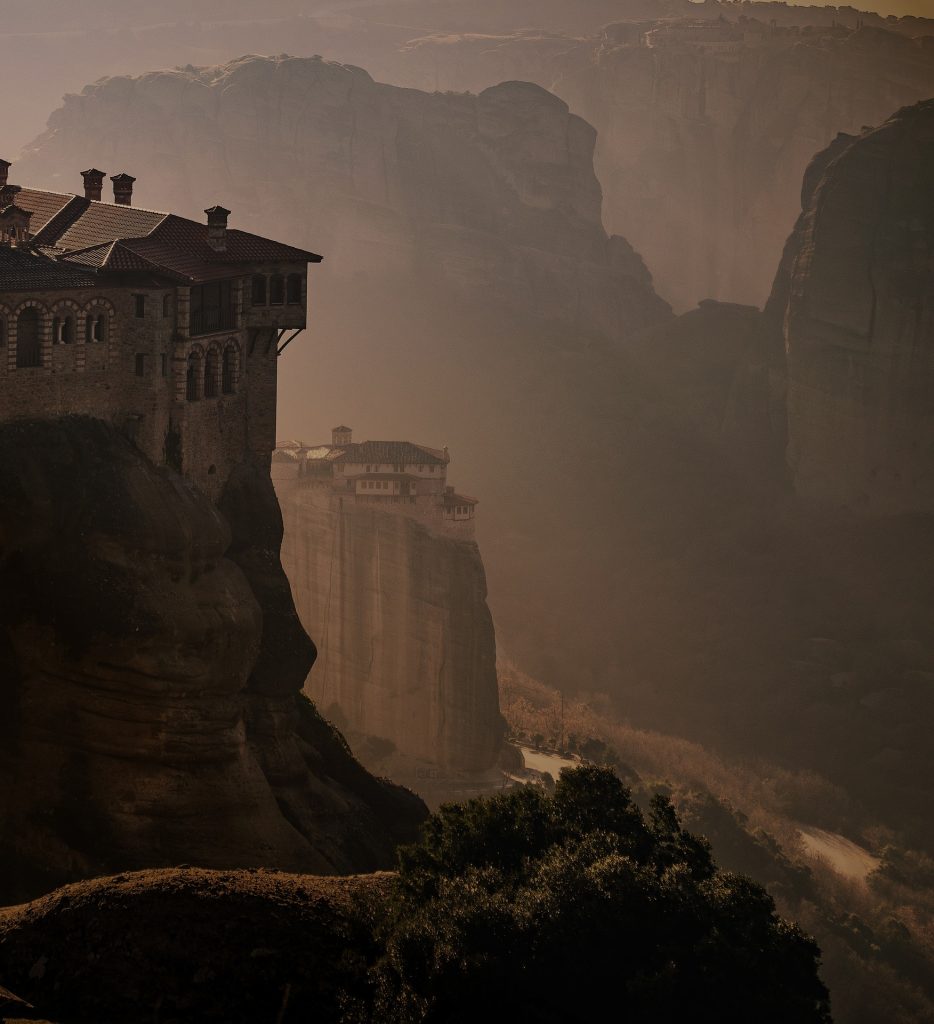
Summer Hours of Operation of the Monasteries (1 April – 31 October)
I.M. of Saint Stephen
9:00 to 13:30 and 15:30 to 17:30.
Closed every Monday.
I.M. of Great Meteor
09:00 to 15:00.
Closed every Tuesday.
I.M. Roussanou
09:00 to 16:30.
Closed every Wednesday.
I.M. of Holy Trinity
10:00 to 16:00.
Closed every Thursday.
I.M. Varlaam
09:00 to 16:00.
Closed every Friday.
I.M. of St. Nicholas Anapaussa
09:00 to 17:00.
Open every day.
Winter Hours – (1 November – 31 March)
I.M. of Saint Stephen
9:30 to 13:00 and 15:00 to 17:00.
Closed every Monday.
I.M. of Great Meteor
09:30 to 14:00.
Closed every Tuesday, Wednesday and Thursday
I.M. Roussanou
09:30 to 14:00.
Closed every Wednesday.
I.M. of Holy Trinity
10:00 to 16:00.
Closed every Thursday.
I.M. Varlaam
09:00 to 15:00.
Closed every Thursday and Friday
I.M. of St. Nicholas Anapaussa
09:00 to 16:00, Sunday: 9:30 to 16:00.
Open every day.

